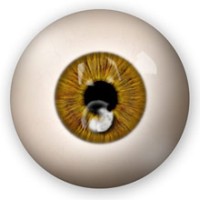Corneal ulcer occurs when there is an open sore on the cornea of the eye. 
Causes of Corneal Ulcer
Generally, corneal ulcers are caused by infections to the eyes. But other conditions may also arise to corneal ulcer.
- Bacterial infectionsMostly occur in people who wear contact lenses, which actually increases risk 10 times with prolonged use and improper care (e.g. using homemade cleaning solutions)
- Viral infectionsChickenpox, shingles, cold sores, etc.
- Fungal infectionsAbuse of eye drops containing steroids
- Foreign body in the eye
- Corneal abrasionsTears from scratches or particles make it more susceptible to bacterial infection
- Disorders preventing eyelids from completely closing, such as Bell’s Palsy
- Disorders that result to dry eyes
- Chemical splash or burns to the eyes
- Vitamin A Deficiency
- May lead to blindness
Signs and Symptoms of Corneal Ulcer
Symptoms of infections of the cornea are the following:
- Red eye
- Intense pain
- Watery eyes
- Feeling of foreign object in the eye
- Itching
- Thick discharge or pus discharged from the eye
- Blurry or hazy vision
- Photosensitivity
- Swollen eyelids
- Sometimes, presence of white round spot on cornea
First Aid for Corneal Ulcer
If one suspects having corneal ulcer, the following method should be done. However, these steps should not be taken as medical advice nor substitute for first aid training. Treatment will depend on the underlying cause and after a visit to the ophthalmologist, the proper treatment will be advised,
- Wash hands with clean water and soap. Dry using a clean towel to minimize infection.
- If one is still wearing contact lenses, remove them immediately.
- Apply a cool compress, such as ice pack or pack of frozen vegetables, to the affected eye. Never apply ice directly.
- Avoid touching or rubbing the eyes
- If the infection is bacterial, antibiotic eye drops will be given.
- In severe cases, surgery may be required.
- For the meantime, avoid wearing eye makeup and if possible, do not wear contact lenses at all.
- Eye patches are not generally recommended as it provides a warm, moist environment, favorable for bacterial growth.
It is essential to know the possible dangers of trauma to the eyes, as complications may be severe. It is most beneficial to be aware of proper treatment of conditions that increases risk for corneal ulcer. To learn more about eye injuries, such as corneal ulcer, it is highly recommended to join in first aid courses taught by known institutions such as workplace approved.
